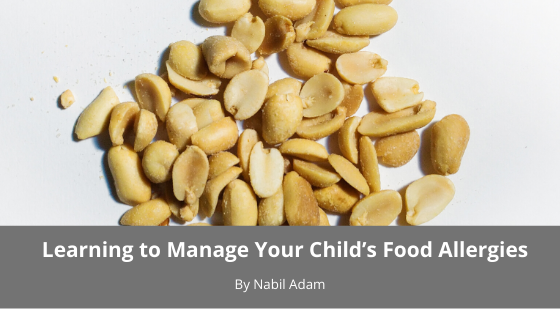In the past few decades, the number of children experiencing food allergies has been on the rise. It can be challenging to have a child with food allergies. From identifying trigger foods to dealing with the emotional consequences of feeling left out or isolated from their peers, parents must help their children learn to navigate the world safely. For parents, the idea that their child could die as a result of an allergic reaction can cause a great deal of anxiety and concern. If your child has experienced food allergies, here are a few tips to help you and your child manage the diagnosis.
Understanding What Allergies Are
Allergies are the result of the immune system attacking substances in the environment that are typically harmless; these substances are known as allergens.
Signs of Allergic Reaction
Allergy symptoms can range in severity from skin irritation and redness, swelling, and hives to diarrhea, vomiting, breathing difficulties, and anaphylactic shock. They have the potential to be fatal, especially when not treated immediately.
Prevent Allergic Reactions
Learn to read food labels, inquire about ingredients in foods others make for your child, make sure you and your child always wash your hands before touching food and clean food prep surface areas before preparing food to prevent cross-contamination. Educate those who come into contact with your child about food allergies and how to avoid an allergic reaction. Teach your child to manage their allergies and ask questions about the ingredients in items they’re unsure of.
Focus on What Your Child Can Eat
Becoming familiar with ingredients that your child can have can help you feel more in control of the situation. It can be empowering to know what ingredients, substitutions, cooking methods, and products work for your child. It allows you to take charge of your child’s wellbeing and helps you to ensure a balanced healthy diet that doesn’t leave your child feeling left out.
You can empower your child by involving them in cooking as well. Once you master a recipe, you can mix it up a bit and vary the ingredients to your taste while continuing to avoid trigger foods. There are tons of recipe databases, cookbooks, and magazines dedicated to food allergies, so you don’t have to go it alone. Often these can provide excellent tips and tricks that you might not have considered.
Know How to Treat Anaphylaxis
Accidents happen. No matter how much you try to shield your child from danger, there’s always the potential for something to slip past your watchful eye. When this happens, make sure you know your child’s treatment protocols. Be aware of the symptoms of anaphylaxis and keep two epi-pens on hand for emergencies.
While childhood allergies to food can be challenging to manage, it is possible. Read up on your child’s food allergies, be prepared, and educate your child on how to protect and advocate for themselves.

